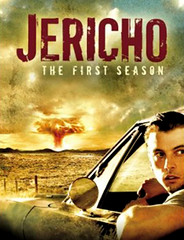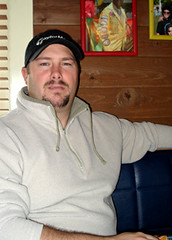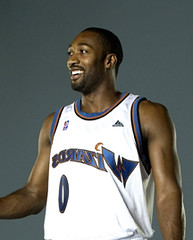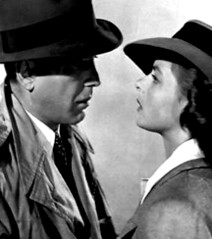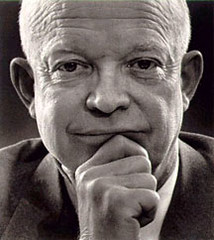Sometimes it’s hard to believe, but I’ve taught a core requirement class, “Writing for Public Relations,” for the certificate in public relations program at the University of Nevada, Las Vegas (UNLV) for seven years. I will be teaching it again next spring but it will not be the same class.
It has to change; not entirely, but significantly. The reason can be found in how I opened my class this past year.
“Other than proven communication strategy and basic writing skills, everything I will be teaching you about public relations this year will be obsolete in three years,” I opened. “Social media has changed the communication landscape that much. Your positions, roles, and responsibilities are likely to be changed forever in the very near future.”
To be honest, I had no idea the change would be taking place even faster. In addition to adding new information to this core class, publicist/editor coordinator for the UNLV Educational Outreach division Dick Benoit, APR, sent me an e-mail last Friday. He said he needed a course description for my social media class next spring by no later than today.
What social media class?
The one you might be teaching in late May. How does your schedule look? Can we offer it in the morning?
The concept of teaching public relations professionals, communicators, and business people about social media is something I enjoy. I don’t teach it like many of my social media colleagues, but I appreciate that we are all on the same page in that social media has changed the communication landscape.
Where we sometimes differ is that I believe the medium should never dictate the message. Rather, I maintain social media is a powerful communication tactic that augments (but does not replace) proven strategic communication, with the measures being tangible outcomes as opposed to mysterious online measures that we see online every day.
Benoit’s interest in social media began some time ago, but its significance may have been driven home when I joined other instructors at an introduction to the certificate in public relations program a few weeks ago. Although I am only teaching “Editing and Proofreading Your Work” this fall (Nov. 3), I spent ample time talking about the presentation I was preparing as a guest instructor for another core class led by Keith Sheldon, ABC, APR. That class, next week (Oct. 17), will be about social media.
Sheldon, a longtime friend and mentor who taught for several years at UNLV as well as the University of California, Chico, understood the impact immediately after seeing a private presentation over lasagna at my home. (He had missed the IABC luncheon where I presented this information; he was out of the country). By the end of the evening, he had asked me to be a guest instructor for his class this fall. He said anyone completing the certificate program needs to be better aware of social media.
The presentation Sheldon saw takes about an hour. The thumbnail sketch Benoit saw was less than 15 minutes. He had introduced it like this…
“Public relations is a science in that we as working professionals spend considerable time planning and evaluating,” Benoit said, introducing me a few weeks ago. “But every time we as public relations professionals think we have it figured out and begin to get comfortable, someone comes along with a new Hula Hoop… the newest Hula Hoop is social media.”
Fifteen minutes later, Benoit was already considering how to ensure public relations professionals know more about social media. Their survival depends on it. Whether we add a class in late May or not, social media has changed the dynamic of my core class forever. That’s some Hula Hoop.

It has to change; not entirely, but significantly. The reason can be found in how I opened my class this past year.
“Other than proven communication strategy and basic writing skills, everything I will be teaching you about public relations this year will be obsolete in three years,” I opened. “Social media has changed the communication landscape that much. Your positions, roles, and responsibilities are likely to be changed forever in the very near future.”
To be honest, I had no idea the change would be taking place even faster. In addition to adding new information to this core class, publicist/editor coordinator for the UNLV Educational Outreach division Dick Benoit, APR, sent me an e-mail last Friday. He said he needed a course description for my social media class next spring by no later than today.
What social media class?
The one you might be teaching in late May. How does your schedule look? Can we offer it in the morning?
The concept of teaching public relations professionals, communicators, and business people about social media is something I enjoy. I don’t teach it like many of my social media colleagues, but I appreciate that we are all on the same page in that social media has changed the communication landscape.
Where we sometimes differ is that I believe the medium should never dictate the message. Rather, I maintain social media is a powerful communication tactic that augments (but does not replace) proven strategic communication, with the measures being tangible outcomes as opposed to mysterious online measures that we see online every day.
Benoit’s interest in social media began some time ago, but its significance may have been driven home when I joined other instructors at an introduction to the certificate in public relations program a few weeks ago. Although I am only teaching “Editing and Proofreading Your Work” this fall (Nov. 3), I spent ample time talking about the presentation I was preparing as a guest instructor for another core class led by Keith Sheldon, ABC, APR. That class, next week (Oct. 17), will be about social media.
Sheldon, a longtime friend and mentor who taught for several years at UNLV as well as the University of California, Chico, understood the impact immediately after seeing a private presentation over lasagna at my home. (He had missed the IABC luncheon where I presented this information; he was out of the country). By the end of the evening, he had asked me to be a guest instructor for his class this fall. He said anyone completing the certificate program needs to be better aware of social media.
The presentation Sheldon saw takes about an hour. The thumbnail sketch Benoit saw was less than 15 minutes. He had introduced it like this…
“Public relations is a science in that we as working professionals spend considerable time planning and evaluating,” Benoit said, introducing me a few weeks ago. “But every time we as public relations professionals think we have it figured out and begin to get comfortable, someone comes along with a new Hula Hoop… the newest Hula Hoop is social media.”
Fifteen minutes later, Benoit was already considering how to ensure public relations professionals know more about social media. Their survival depends on it. Whether we add a class in late May or not, social media has changed the dynamic of my core class forever. That’s some Hula Hoop.







